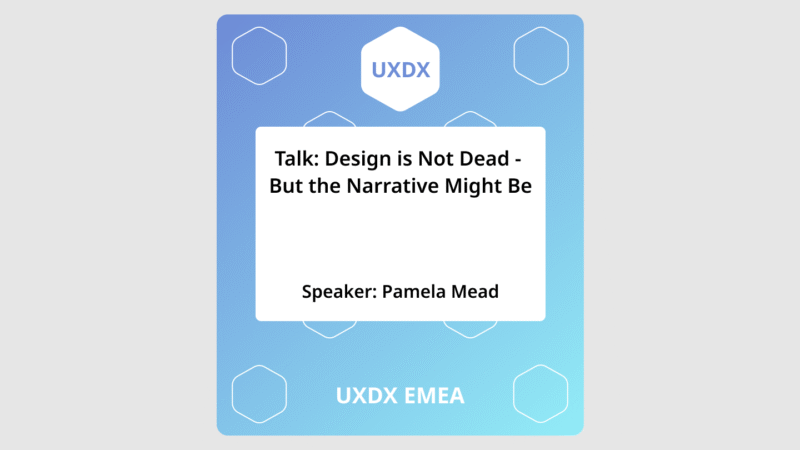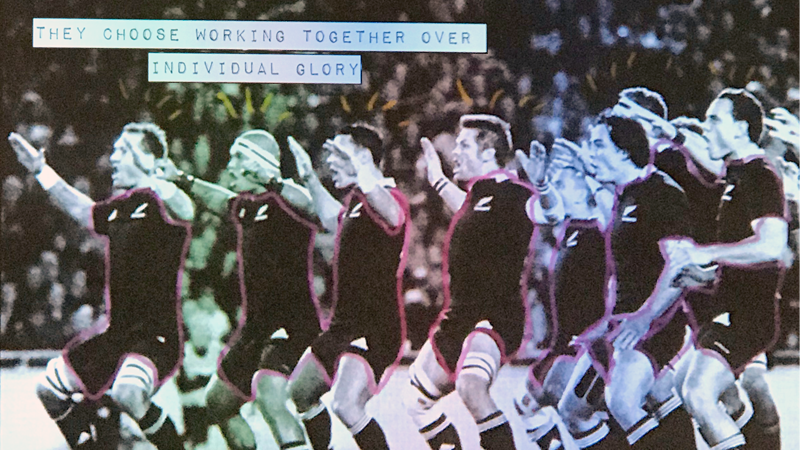Speaker: Anthony Maggio (VP & Head of Product Management) Every so often, a talk comes…

Design Is Not Dead — But the Narrative Might Be
Speaker: Pamela Mead (SVP Global Design @ SumUp)
Rethinking design’s story
Every now and then, a new wave of debate surfaces around whether design is dead. It’s usually triggered by something — AI, business pressure, a reorg — and it always feels a bit familiar.
But as Pamela Mead points out in her recent UXDX talk, design isn’t dying. What’s shifting is the story we tell about it — how we define its value, explain its purpose, and defend its place in an organisation.
That struck a chord with me. Having worked across education, publishing, and product design, I’ve seen how quickly our language about design can become outdated, even when the intent behind it remains relevant.
The stories that no longer fit
Design used to be positioned as the hero — a department that swoops in to make things beautiful, usable, or “delightful.” It made sense at the time: design was fighting for a seat at the table.
But in today’s environment — fast, AI-driven, outcome-focused — that narrative doesn’t hold up.
Design isn’t a saviour; it’s a partner in solving business and user problems.
Pamela’s point about knowing what to keep and what to let go really resonated.
-
-
- Keep empathy, clarity, and the drive to make things better.
- Let go of process dogma, perfectionism, and the idea that design sits apart from business.
-
That’s not a loss of craft — it’s evolution.
Leading design through uncertainty
As a design lead, I’ve found the hardest part of this shift isn’t the tools or methods — it’s the mindset. When old narratives break, teams can feel unanchored.
Pamela talked about reframing how we define design’s role inside the business: building trust, clarifying impact, and creating space for collaboration rather than control.
That’s exactly where design leadership needs to operate now — shaping direction, connecting disciplines, and guiding decisions when the path isn’t always clear.
AI: threat or catalyst?
It’s impossible to ignore how AI is reshaping our work. Tools can now generate layouts, write UX copy, even produce early concepts in seconds.
But as Pamela reminded us, AI doesn’t replace the designer — it just moves the goalposts.
Our value lies in judgement, context, and connecting ideas to outcomes.
If anything, AI challenges us to focus more on what only humans can do — ask better questions, make ethical choices, and define what “good” means for real people.Rebuilding the narrative
One of the biggest challenges today isn’t doing design — it’s explaining design. Many stakeholders think they’ve “seen it before,” so the onus is on us to make it meaningful again.
That means shifting conversations:
-
-
- From outputs to outcomes.
-
- From design as service to design as strategy.
- From defending process to demonstrating value.
-
When we get this right, design stops being questioned and starts being relied on.
Final thought
Pamela Mead’s talk is a great reminder that the future of design depends on the stories we tell about it.
Design isn’t dead — but if we don’t evolve our narrative, we risk becoming irrelevant to the very organisations we want to help.
As designers and leaders, our job is to keep the story alive: not through nostalgia for what design used to be, but through a clear vision of what it can become.

